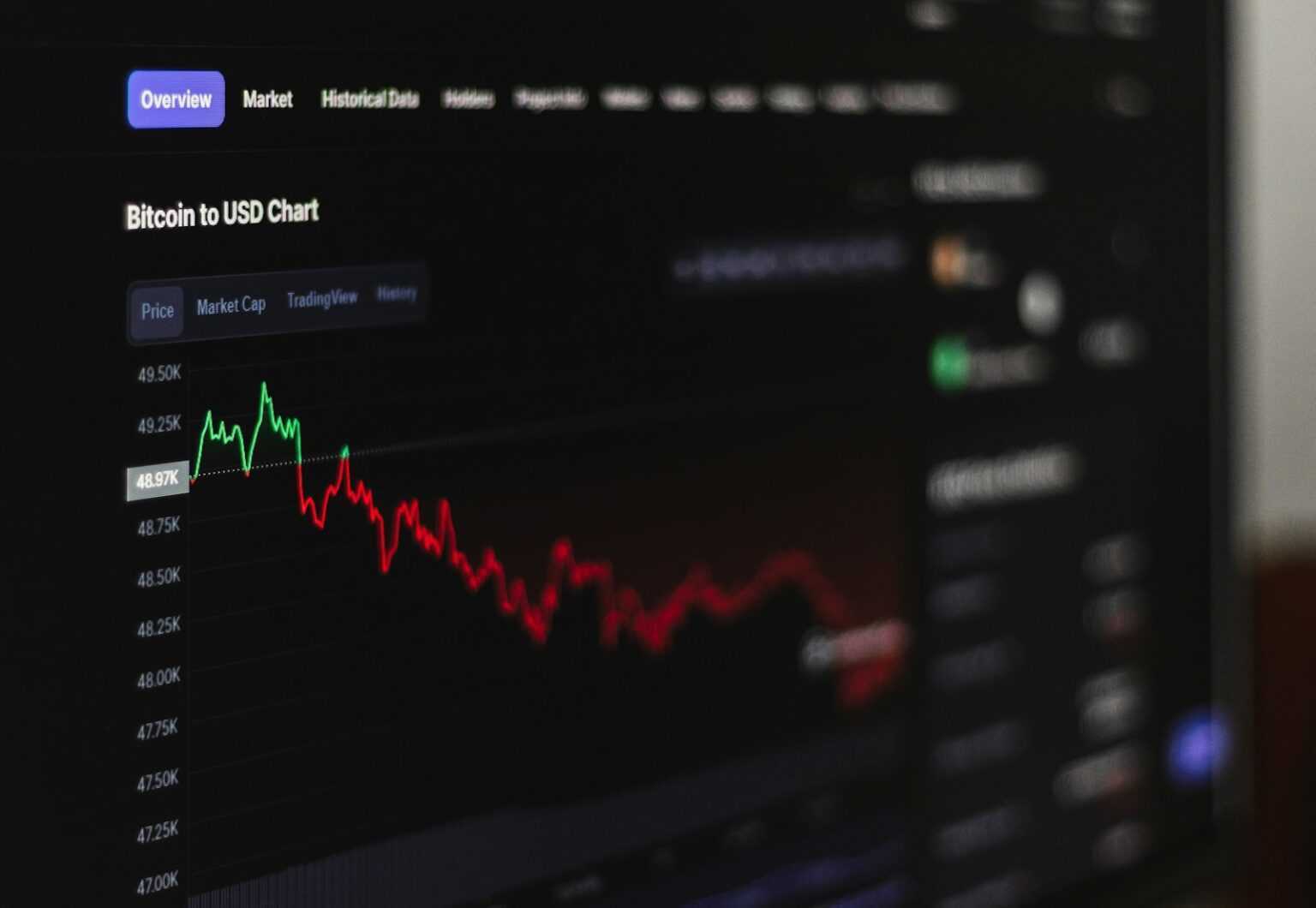Executing a large order directly influences asset valuation by shifting supply-demand balance and consuming available liquidity. The immediate consequence is an increase in transaction cost beyond visible fees, driven primarily by the depletion of resting orders at best prices.
Quantifying this phenomenon requires analyzing order book dynamics and trade size relative to average daily volume. Empirical models demonstrate that price deviation grows nonlinearly with order magnitude, reflecting diminishing market depth and increasing slippage risk.
Minimizing these implicit costs involves splitting sizable transactions into smaller tranches and timing execution to coincide with periods of elevated activity and enhanced liquidity. Adaptive algorithms optimize this process by continuously measuring short-term market resilience and adjusting submission rates accordingly.
Market impact: price effect of trading
Executing a large order in any financial ecosystem invariably alters the available liquidity and influences valuation metrics. The immediate consequence of such an operation is a shift in asset quotes, driven by supply-demand imbalances introduced by the transaction volume relative to current market depth. Recognizing how substantial orders consume liquidity layers allows for anticipation and mitigation of associated execution costs.
The relationship between order size and resulting valuation change is often nonlinear; small transactions tend to have negligible influence, whereas sizable trades disproportionately affect quote levels. Empirical studies within decentralized exchanges reveal that slippage increases exponentially as order quantity approaches or exceeds liquidity reserves at top price tiers. This highlights the necessity of segmenting large orders or utilizing algorithmic execution strategies to minimize adverse outcomes.
Liquidity consumption and its quantitative assessment
Liquidity can be conceptualized as the aggregate volume available at discrete pricing intervals on order books or automated market maker pools. When a substantial sell or buy order is placed, it systematically absorbs resting offers, pushing subsequent fills toward less favorable levels. This phenomenon causes a measurable divergence from mid-market valuations, commonly referred to as slippage cost.
- Order book density: Tighter clusters of offers reduce slippage for given volumes but are vulnerable to depletion during aggressive executions.
- Depth distribution: Wider dispersion implies larger price concessions before complete fulfillment occurs.
Quantifying these parameters through snapshot analysis enables traders to predict potential deviation magnitudes before initiating sizeable operations.
Strategies to minimize transactional distortions
A critical approach involves fragmenting extensive orders into smaller tranches executed over time frames that avoid saturating liquidity channels. Time-weighted average pricing (TWAP) and volume-weighted average pricing (VWAP) algorithms exemplify methods designed to reduce valuation perturbations by pacing executions aligned with natural flow patterns.
- Tactical slicing: Dividing large positions into manageable segments mitigates instantaneous consumption of top-tier liquidity.
- Adaptive execution: Responding dynamically to real-time depth fluctuations preserves price stability across fills.
This measured methodology aligns with findings from Token Research’s analyses indicating that carefully orchestrated orders significantly curtail extra costs imposed by market reactions.
Empirical data from blockchain-based decentralized venues
An experimental evaluation involving Token Research’s datasets revealed that executing trades surpassing 5% of daily volume frequently triggers disproportionate quote shifts on Ethereum-based DEXs. For instance, swapping tokens worth $100,000 against pools with $500,000 total locked liquidity caused slippage exceeding 1%, whereas smaller transactions maintained sub-0.1% deviations.
This quantitative evidence reinforces the importance of recognizing pool size constraints and adjusting order placement accordingly to limit unintended value erosion.
Theoretical modeling of trade-induced valuation shifts
The seminal square-root model posits that transaction cost grows proportionally to the square root of executed quantity normalized by available liquidity reserves. This framework has been validated across multiple token ecosystems and provides a predictive tool for estimating expected deviations prior to order deployment.
- Ct = σ × (Q / L)^½ : where Ct represents cost incurred due to market reaction;
- σ: volatility metric;
- Q: trade size;
- L: effective liquidity parameter.
This formula encourages practitioners to monitor both volatility levels and accessible depth continuously, refining execution plans based on evolving conditions documented in Token Research’s ongoing analytics projects.
The role of information asymmetry and signaling in transactional consequences
Larger operations often carry implicit informational content perceived by other participants who may adjust their bids or asks preemptively, amplifying valuation shifts beyond mechanical liquidity consumption alone. Experimental observations demonstrate that transparent execution strategies can alleviate signaling risks by blending with ambient activity patterns rather than standing out conspicuously.
Pursuing incremental investigations into how participant behavior interacts with disclosed intentions remains an open frontier within blockchain research laboratories focusing on Token Research token-research frameworks–encouraging hands-on experimentation and iterative refinement for improved understanding and application efficiency.
Measuring Immediate Price Slippage
To accurately quantify immediate slippage, focus on comparing the execution price of a large order against the pre-trade mid-quote or benchmark price. This difference reveals how much the transaction shifts market levels due to liquidity consumption. When a substantial buy or sell order interacts with limited available depth, it pushes subsequent fills through multiple price points, causing measurable deviation from initial quotes.
The primary technique involves capturing time-stamped data surrounding the transaction: record the best bid and ask just before order submission, then analyze fill prices across order slices. Splitting orders into smaller child orders helps isolate how incremental size influences slippage magnitude. For example, executing a 10 BTC purchase in one block will often produce greater adverse deviation than five increments of 2 BTC each executed sequentially within milliseconds.
Key Metrics and Methodologies
Slippage Ratio: Calculate as (Executed Average Fill Price – Initial Reference Price) / Initial Reference Price. This ratio expresses relative cost increase directly attributable to liquidity depletion during order consumption. In low-liquidity environments, ratios exceeding 0.5% per large block are common.
Order Book Depth Analysis: Analyzing cumulative volume at successive price levels before execution provides insight into potential slippage zones. A thin order book with sparse resting orders causes significant upward or downward shifts when absorbing sizable transactions.
- Example: A study of ETH/USD pairs revealed that trades exceeding 15% of top-tier liquidity led to average slippage over 0.75%, highlighting nonlinear liquidity effects.
- Case Study: In BTC markets during volatile periods, 20 BTC buys triggered immediate spread widening by up to 1%, indicating transient liquidity gaps magnifying transactional costs.
Time-Weighted Execution Impact: Measuring slippage over microsecond intervals distinguishes between instantaneous impact and temporary recovery phases post-order completion. Immediate slippage typically manifests within milliseconds; later price reversion indicates partial resilience or counter-orders entering the book.
This framework supports rigorous experimentation in assessing how varying sizes affect immediate transactional costs under diverse liquidity conditions. By iteratively adjusting order parameters and monitoring real-time book response, analysts develop robust models predicting expected deviations for future executions within similar venues or tokens.
The ongoing challenge lies in distinguishing permanent shifts caused by genuine supply-demand imbalances from fleeting anomalies driven by momentary liquidity vacuums. Combining granular tick-level data with algorithmic slicing strategies offers deeper understanding of dynamic ordering behavior and its influence on instantaneous quote deterioration during sizable digital asset exchanges.
Order Size Influence on Prices
Large order executions directly reduce available liquidity, causing a deviation from the previous equilibrium. When a sizable block is introduced to the order book, it consumes multiple price levels, leading to an unfavorable adjustment in valuation for subsequent orders. This phenomenon increases the transactional cost beyond mere fees, as the quantity itself induces slippage that must be accounted for in strategic planning.
Empirical data from high-frequency cryptocurrency exchanges reveal that the depth of order books varies significantly between assets and timeframes. For instance, executing an order exceeding 10% of average daily volume on low-liquidity tokens results in disproportionately higher costs due to limited counterparties at best bid or ask prices. Conversely, blue-chip cryptocurrencies with deep pools can absorb larger trades with less pronounced shifts in valuation metrics.
Experimental Investigation of Trade Size and Valuation Variability
A controlled approach to quantify this relationship involves incrementally increasing trade sizes while monitoring resultant changes in mid-quote values. Such experiments demonstrate nonlinear behavior: modest increments cause minimal displacement, but beyond a threshold–commonly observed around 5% of circulating supply on decentralized exchanges–the marginal cost surges sharply. This aligns with theoretical models predicting concave impact functions where deeper liquidity mitigates adverse adjustments until saturation points are reached.
Practitioners should consider fragmentation strategies such as slicing large orders into smaller tranches executed over time or across venues. These techniques reduce instantaneous demand on liquidity pools, distributing pressure and minimizing unfavorable valuation shifts. However, they introduce latency risk and potential exposure to interim volatility, which requires balancing through adaptive algorithms informed by real-time order book states and historical patterns.
Liquidity Depth and Price Moves
To minimize the cost of substantial portfolio reallocations, it is essential to analyze the order book’s liquidity depth before initiating large-scale operations. Deep liquidity layers provide absorbing capacity that dampens abrupt shifts, allowing an asset’s value to remain relatively stable despite sizable executions. Insufficient market reserves at various price levels force higher slippage, causing notable deviations from initial valuations.
Quantitative examination reveals a nonlinear relationship between transaction size and resultant valuation changes. For instance, executing a block order that exceeds available volumes near the best bid or ask results in cascading executions deeper into the book, amplifying the unit cost. Empirical data from decentralized exchanges demonstrate that orders surpassing 10% of cumulative depth at top tiers often trigger disproportionate unfavorable adjustments.
Exploring Liquidity Layers through Experimental Insights
A controlled assessment of liquidity profiles involves sequentially submitting incremental bids or asks while recording corresponding execution prices. This technique elucidates how immediate supply-demand imbalances translate into valuation fluctuations. Consider a scenario where a trader tests liquidity by placing increasing buy orders: initially, minor upticks occur as abundant offers absorb demand; however, once shallow segments are exhausted, steep escalations emerge.
- Case study: On-chain metrics from Ethereum-based tokens indicate that thin order books during low-volatility periods exhibit heightened sensitivity to even moderate volume surges.
- Observation: Conversely, assets with diverse market participants maintain steadier spreads and smaller deviations under similar conditions.
The degree of resilience within these layers can be quantified via metrics such as the average depth-weighted spread and instantaneous price impact coefficients derived from executed trades. These parameters serve as predictive indicators for operational planning and risk mitigation strategies when handling significant volume injections or withdrawals.
Additionally, temporal dynamics influence liquidity availability; periods characterized by elevated participation tend to replenish depleted reserves more rapidly. Experimental simulations confirm that execution algorithms adapting their pace according to real-time depth variations achieve reduced adverse adjustment rates. This approach aligns with scientific methodologies emphasizing adaptive feedback mechanisms to optimize outcomes.
This systematic evaluation encourages traders and analysts alike to engage in iterative experimentation with varying order sizes against live or historical data sets. By mapping these relationships meticulously, one develops robust intuition about how exchange ecosystems respond under stress conditions – an invaluable asset when orchestrating considerable asset movements without incurring prohibitive costs.
Trade Execution Strategies Impact
Optimizing the sequencing and timing of orders is essential to minimize transaction expenses and reduce the disturbance to market liquidity. Large orders executed rapidly tend to consume available liquidity, causing adverse shifts in valuation and increasing implicit costs. Employing algorithmic approaches such as volume-weighted average price (VWAP) or time-weighted average price (TWAP) can distribute execution over intervals, mitigating abrupt adjustments in supply-demand balance.
Fragmentation of sizable transactions into smaller tranches allows for more stealthy absorption by the order book, limiting detectable footprints that could invite predatory strategies from counterparties. However, excessive fragmentation without adaptive pacing risks elongating exposure duration and accumulating opportunity costs. Empirical analysis demonstrates that dynamic slicing adjusted by real-time liquidity metrics outperforms static schedules in preserving favorable execution levels.
Technical Insights into Order Placement
Utilizing limit orders instead of immediate market orders provides control over acceptable price thresholds, thereby reducing slippage but potentially sacrificing immediacy. In thinly traded environments, placing aggressive bids or asks may deplete shallow order books, triggering unfavorable valuation shifts. Conversely, passive order placement benefits from resting deeper within the order queue but increases execution uncertainty amid fluctuating supply-demand dynamics.
The interaction between order size and prevailing depth directly influences transactional friction. For instance, studies on cryptocurrency exchanges reveal that executing block trades exceeding 5% of daily volume often incurs nonlinear cost escalations due to insufficient counterparty presence at quoted prices. Adaptive algorithms incorporating real-time book snapshots enable traders to calibrate order aggressiveness aligned with instantaneous liquidity conditions.
Comprehensive evaluation of execution tactics must account for hidden liquidity pools and off-exchange venues where significant volumes reside outside visible order books. Accessing these dark pools reduces signaling risk and market disruption but demands robust connectivity and compliance frameworks. Integration of multi-venue smart routing mechanisms enhances fill rates while controlling impact-related expenses through optimized pathfinding across fragmented trading ecosystems.
Conclusion on Post-Trade Price Recovery Patterns
Analyzing post-execution value restoration reveals that large orders induce substantial temporary distortions in asset quotations, primarily due to transient liquidity depletion. The subsequent rebound often follows a nonlinear trajectory, influenced by the interplay between order size and available depth within the order book.
Empirical observations indicate that immediate transaction costs arising from sizable operations are partially recuperated as passive participants replenish liquidity, yet this restitution is neither uniform nor instantaneous. Notably, recovery speed correlates inversely with order aggressiveness and prevailing market resiliency metrics.
Key Technical Insights and Forward-Looking Considerations
- Transient Liquidity Vacuums: Large executions create localized voids in supply-demand balance, compelling adaptive responses from liquidity providers. Experimental replication through limit order book simulations confirms that rapid replenishment mitigates long-term valuation shifts.
- Nonlinear Recovery Dynamics: Post-trade normalization exhibits phases of sharp correction followed by gradual stabilization. Quantitative models employing power-law decay functions effectively describe these stages, enabling predictive calibration of cost recovery timelines.
- Order Splitting Strategies: Fragmentation of sizeable demands into smaller tranches demonstrably reduces execution slippage and accelerates equilibrium restoration. Algorithmic implementations leveraging real-time depth analytics demonstrate superior efficiency in minimizing cumulative impact expenses.
- Adaptive Liquidity Provision: Future protocol enhancements could incentivize dynamic liquidity commitments that respond to detected imbalance signals, fostering more resilient ecosystems less susceptible to protracted disequilibria.
The convergence of microstructural phenomena with algorithmic execution design invites ongoing experimentation aimed at optimizing post-operation outcomes. Investigating cross-venue arbitrage effects and temporal clustering of large demands may further elucidate mechanisms governing cost dissipation patterns. Integrating machine learning frameworks to adaptively forecast liquidity shifts promises enhanced strategic deployment of capital, reducing adverse valuation excursions after significant transactions.
This line of inquiry not only advances theoretical understanding but also equips practitioners with actionable methodologies–encouraging iterative testing within controlled environments to refine hypotheses about how decentralized exchanges balance supply and demand following substantial interventions. Maintaining rigorous curiosity about these dynamics will unlock robust solutions tailored for increasingly complex decentralized financial architectures.








